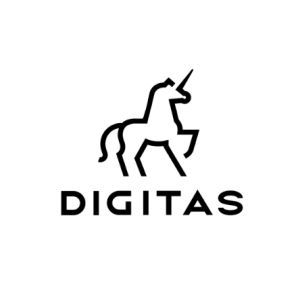
Content and Data: A Match Made in Heaven

Protecting consumer privacy, the importance of first-party data, and the significance of creating a seamless customer experience were key trends that resonated through numerous personalisation-themed sessions at this year’s Adobe Summit, which took place April 26th-28th.
Chad Deweese, a senior manager at Deloitte Consulting, echoed the feelings of many when he said, “I’m hesitant to give anything to my local grocery store to get discounts on groceries, but if my favorite sports team asks me for my bank account number to get into the locker room after a game, then I’ll do it.”
This comment highlights the increasing value of data and the growing hesitancy of consumers to share it. As personal information becomes a more critical component of the marketing mix, brands that rely on it need to increase their focus on building trust, developing meaningful relationships and offering memorable experiences.
In my current role bringing personalised experiences to life for brands, I’ve long held the belief that content is king. Recently however, there’s been a new school of thought that data is king. I say, why not both? You can’t have personalized customer experiences without content and data working seamlessly together.
To thrive in this dual monarchy, we need to change the way we acquire and leverage data (connected ID), communicate with our consumers (connected customer experience) and how we work (connected process).
Here are some of the key takeaways from Summit and steps we can take to stay ahead:
Connected ID
Consumers are becoming increasingly protective of their privacy and what they’re willing to share with brands. And when they do share, they expect to get something of value in return.
As Google and Apple place greater restrictions on the ability of marketers to obtain consumer information and the cookieless future becomes a reality, brands are being forced to take a closer look not only at their own first-party data, but also at their ability to improve their process for gathering and leveraging data moving forward.
Look for customer data platforms (CDPs) to play an enhanced role in helping to streamline fragmented data from across multiple sources. Benefits of a connected ID include maximised reach, better targeting, cost savings from not paying to reach the same customer multiple times, and more precise measurement.
Connected Customer Experience
The consumer-brand relationship is an ongoing journey. Brands need to ensure that they’re delivering a consistent message and communicating with their customers across multiple platforms, including text, email, live chat, and offline. Remember: there’s a wide range of preferences for how people choose to engage. The goal is to acknowledge those preferences and have one ongoing conversation that’s consistent across all channels.
This can be best accomplished by leveraging data, media, technology and content, creating a formula that delivers the right message to the right person at the right time. This needs to be done at speed and at scale, without sacrificing quality.
While a lot of progress has been made towards this end on the data (targeting) and media (buying) side of the equation, content and optimization remain the greatest growth opportunities. This means not only investing in the right systems and tools to fully operationalize the content you have, but also adopting a more collaborative mindset that closely integrates the various channels.
Connected Process
A key to delivering a consistent message is getting everyone on the same page, and this needs to happen on the organizational level as well. Brands need to break down silos, ensuring that digital and data experts are connected across teams to create a culture for driving personalization.
Constant testing and research is also critical. Focus on the five or ten most important things you want to learn, and always have a “learning agenda” in mind. This can help improve processes and drive business results.
Brands should also start leveraging AI if they haven’t already – and fast. They should begin with implementing AI on the tools they currently use to better understand how it can impact personalized experiences.
Investing in personalisation to deliver a unified, relevant experience for customers can pay huge dividends. According to ClickZ, companies using advanced personalization report a $20 return for every $1 spent. It’s the ultimate win-win scenario – customers get a better experience, and brands recognize a significant boost to the bottom line. The majority of brands don’t need convincing – they’re already incorporating personalization strategies into their overall marketing mix on some level. If your company has yet to begin, just go ahead and start somewhere -- it’s not too late! As Winston Churchill said, “I never worry about action, but only inaction.”













